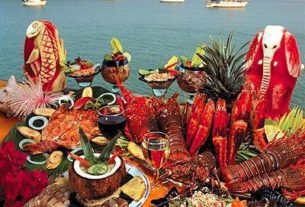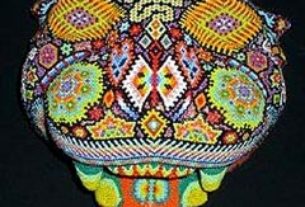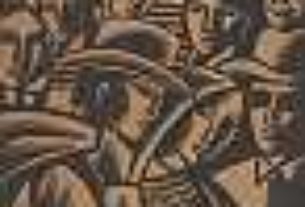Isolated high in the Sierra Madre mountains of northwestern Mexico, and protected from the outside world for centuries by the natural barrier the mountains afforded, the Huichols have preserved probably the most pure preColombian culture in our hemisphere.
The Huichols call themselves “the healers.” For generations, they have performed ceremonial rituals they believe heal the Earth and keep nature balanced, thus perpetuating all life. Key to the ceremonies is the love offering of the white-tailed deer to their nature-deities. The deer represents goodness and is the food of the gods. But due to overhunting by outsiders and the encroachment of civilization, the deer had disappeared from the Sierra forests. The Huichols could no longer conduct their ancient ceremonies. The pact with their god-spirits had been broken, and the gods were angry. The result, the Huichols believed, their lands and the outside world. They believed only they could save the Earth.
SO SINGS THE BLUE DEER is the fictionalized account of their 600 mile pilgrimage from their remote Sierra mountains into the heart of Mexico City — the world’s most populous and polluted city — to obtain 20 white-tailed deer from the Mexico City zoo in an effort to save the Earth from environmental destruction. With these reintroduce the white-tailed deer to the Sierra forests, ensuring that they and future generations of Huichols could once again perform the ancient ceremonies.
The story is told through the eyes of Moon Feather, the fictional thirteen-year-old grandson of the Grand Shaman, who is chosen to go on the arduous trip in his ailing grandfather’s place.
The weight of the responsibility is shown in the following excerpt. These are the opening paragraphs of the book:
“Moon Feather bolted upright on his reed pallet. In the darkness of the night, deer antlers loomed over him. Their needlesharp points glinted in the moonlight.
“He began to cry out, than realized he had been dreaming. The deer dream. It had come again. Always the same dream.
“Wet with perspiration, Moon Feather sank back onto his bed and waited for his heart to stop pounding.
“The deer antlers he had seen were real. They hung above him in the dark, outlined in moonlight from the open doorway. They were suspended by leather thongs from the large wooden pole that supported the thatch roof of the house.
“The antlers were real. But the stag in the forest had been a dream.
“Moon Feather snuggled beneath the soft black bearskin covers. He peered about him at the familiar stone and adobe-mud walls of his family home. All his thirteen years he had awakened to the interior of this Huichol Indian house, high in the remote Sierra Madre Occidental mountains of northwestern Mexico.
“He was safe, safe as his people had been since the Huicholes’ ancestors had taken refuge in these isolated mountains centuries ago to excape their enemies — first other Indians, then Spanish soldiers who had come from across the sea.
“Moon Feather could hear the sounds of the fading night in the black mountains outside. It must be early, he thought, for there were no portable radios blaring in the Huichol settlement. He lay listening for thunder — the voice of the god-spirits telling him the blessed rain had come at last.
“But what he heard was a mockingbird singing a rich, melodious song as she winged through the moonlight, ‘Whee see de tree tree.’ A coyote barked, ‘Yip, yip, yip,’ somewhere down the arroyo. He was headed home by way of the stony canyon after a long night’s hunting.
“It would be light soon, and with the light would come the most important day of Moon Feather’s life. In a few hours, he would leave the mountains for the very first time. He threw off the covers, too excited to sleep any longer.
“Today he, Moon Feather, must save the world.”
As we face the new millenium, we have many doubts and fears. We can find hope and guidance in the Huichol wisdom that led the Huicholes into this past millenium a thousand years ago, and directs their steps today. It is an eco-religious philosophy that has evolved from centuries of total immersion in nature. In their efforts to determine their place in the cosmos, the Huicholes have explored inner space as we have explored outer space. In our explorations outward, we find ourselves with a sad inner void longing to be filled — a need to find our balance with Creation, a connectedness to something bigger than ourselves. The Huicholes can teach us.
“Moon Feather’s grandfather, the Grand Shaman, was standing beside him. The old man’s hand, brown and knotted with age like an ancient mesquite tree, rested on the boy’s shoulder. It felt warm and strong as the brown earth on which they stood.
“Moon Feather could almost imagine that his grandfather had gnarled roots for feet, roots that reached deep into Huichol soil.
“‘Today you leave,’ said his grandfather.
“The two stood on the altar of Mother-Earth, watching the sun rise. Moon Feather smiled inside himself as the yellow globe of Father-Sun cut over the mountaintops. Its rays edged in golden light the thatch roofs of the distant houses. Mist like spun gold drifted up from the valley. Moon Feather had never seen such a beautiful morning.
“‘Look how alive Father-Sun is, how alive the whole earth is’, said his grandfather. ‘The sky, the rocks, the streams — these are our greatgrandparents, Moon Feather. They have so much to teach us, but they need our love in return.’ The old man paused, savoring the warmth of the sun’s first rays on his weathered cheeks.
“‘Man must learn to trust nature again, my grandson. To recognize the healing power that lies in the forests and the mountains. The kupuri life force of Grandmother-Growth-Nakawe flows through all her creations, all souls are linked.
“‘Man must grow to feel in his own heart the pain of the wounded animal, the crushed blade of grass. He must learn to share the tears of every living thing.'”
By Charmayne McGee and adapted here from her Site with her kind permission.



